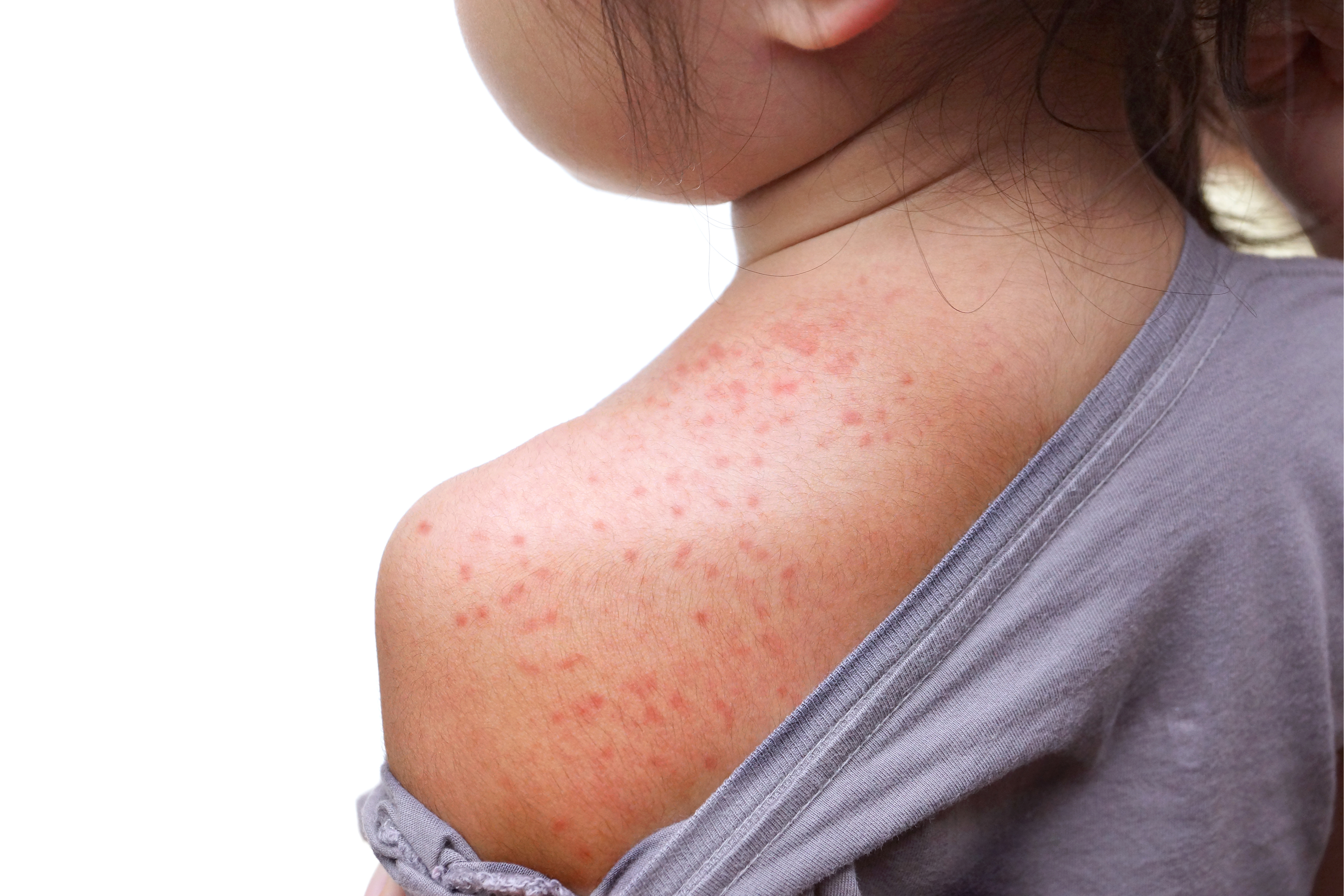Scleroderma
Scleroderma causes hardening and tightening of the skin but may also affect other body parts.
Scleroderma, which means “hard skin,” is a rare disease that affects the skin and connective tissue (fibers that provide structure and support to the body). There are two types of scleroderma – localized and systemic (sometimes called systemic sclerosis).
Localized scleroderma mainly affects the skin and is more common in children; systemic scleroderma may affect many body parts and is more common in adults. Roughly 300,000 people in the United States have scleroderma and about one-third of those people have the systemic form. It is more common in women than men.
Causes
People with scleroderma produce too much collagen, a key part of connective tissue. Too much collagen makes the skin thicken and harden. In some cases, it may also cause organ tissues to harden, which can affect the way the organ works. Experts aren’t sure what causes excess collagen, but they suspect an improperly working immune system plays a role.
Symptoms
Localized Scleroderma
This type mainly affects the skin, but also can affect tissues beneath the skin. There are two types of localized scleroderma:
- Linear scleroderma causes lines or streaks of thickened skin to form over an area of the body, such as an arm, leg or the head. It may cause ulcers on the skin when the tissues are damaged.
- Morphea causes one or more hard, oval-shaped, whitish or darkened patches of skin.
In many cases, the skin will soften, and patches will clear up on their own within three to five years.
Systemic Scleroderma
This type can affect many parts of the body, including the skin and internal organs. There are two types of systemic scleroderma:
Limited scleroderma affects the skin on the face, fingers, hands, and lower arms and legs. The first signs of systemic scleroderma are often cold sensitivity ( and puffy fingers. . This can cause numbness, pain and a white or bluish appearance to the fingers (Raynaud’s phenomenon). Symptoms worsen in cold weather or when handling cold objects. These symptoms can begin several years before other symptoms. The effect on internal organs tends to be mild. Some patients with limited scleroderma have CREST syndrome, which involves
- Calcinosis (calcium deposits in the skin).
- Raynaud's phenomenon (fingers and/or toes become white or bluish and cold or numb).
- Esophageal dysmotility (difficulty swallowing).
- Sclerodactyly (tight skin on the fingers).
- Telangectasias (red spots on the skin).
Diffuse scleroderma
Diffuse scleroderma involves widespread skin thickening over any part of the body, especially the hands, arms, thighs, chest, abdomen and face. Blood vessels, heart, joints, muscles, esophagus, intestines and lungs may also be damaged. The severity of internal organ involvement varies.
Health Effects
Sjogren’s syndrome causes dryness in the eyes, mouth and vagina. Approximately 20 percent of people with systemic scleroderma develop this condition.
Hardening of the skin, muscle and bone can limit range of motion in the joints.
Hardening of tissues of the digestive tract can cause heartburn, difficulty swallowing, problems with nutrient absorption, and constipation.
Hardening of heart tissues can cause a variety of heart troubles, including abnormal heartbeat, heart failure, and increased pressure in the heart.
Scarring of lung tissue can make it hard to breathe. Pulmonary hypertension (high blood pressure in the arteries to your lungs) is also possible.
Scarring of the kidney tissue may cause high blood pressure and, if left untreated, kidney failure.
scleroderma
3M
Americans live
with Scleroderma
30%
1/3 of scleroderma
cases are ststemic.
95%
Up to 95% of people with
scleroderma have Raynaud's Disease.
Diagnosis
Because the disease can take many forms, scleroderma may be difficult to diagnose. A medical history, physical exam and laboratory tests can help rule out other conditions. The doctor may remove a small tissue sample (biopsy) of the affected skin to check for abnormalities. A variety of lab and imaging tests may be used to check for signs of organ damage.
Treatment
There is no cure for scleroderma, but treatment can help manage symptoms. Because symptoms vary greatly, treatment options are broad, and include a range of medications and self-care practices. Depending on which body parts are affected, several specialists may be involved in care, including a rheumatologist (a doctor who specializes in musculoskeletal diseases), a dermatologist (skin doctor), and those who treat specific organs.
Medications
There is no drug to treat the underlying cause of scleroderma — too much collagen. But several medications can control symptoms and prevent complications. Medications for internal organ problems depend on the organ involved.
- Topical creams. Medications and moisturizers treat hardened skin and prevent it from drying out.
- Vasodilators/ blood pressure medications. Drugs to open blood vessels can improve circulation to treat Raynaud’s phenomenon and manage hypertension.
- Anti-inflammatory medications. Nonsteroidal anti-inflammatory drugs and corticoste/Drug-Guide/Corticosteroids/Corticosteroidsroids reduce joint, muscle, heart and lung inflammation.
- Immunosuppressive drugs. Drugs that suppress the immune system may help in some cases but are still under investigation.
Physical Therapy
Physical therapists can help keep skin and joints flexible by teaching strengthening and range-of-motion exercises.
Phototherapy
Phototherapy, which involves brief exposure to artificial UV light, may help soften skin and reduce severe skin symptoms.
Self-Care
Choose gentle cleansers with added moisturizers.
- Exercise regularly. Physical activity keeps skin and joints flexible, improves circulation and relieves joint stiffness.
- Don’t smoke. Smoking worsens Raynaud’s and lung disease.
- Manage heartburn. Avoid foods that cause heartburn and eating late at night.
- Practice good skin care. Too much collagen can make skin dry and irritated. These measures can help protect the skin:
- Choose gentle cleansers with added moisturizers.
- Avoid contact with skin irritants, like detergents, harsh soaps and fragrances.
- Wear rubber gloves while doing the dishes or cleaning.
- Take brief showers and baths; use warm, not hot, water.
- Moisturize immediately after bathing.
- Use sunscreen to prevent skin damage.
- Use a humidifier to increase moisture in your home.
- Wear gloves to prevent Raynaud’s flares.
- Manage emotional health. Changes in physical appearance coupled with managing a chronic illness can create stress and lead to depression. Friends, family and therapists can provide support during tough times. Using mind-body techniques such as meditation and yoga may also help manage the psychological and emotional impact of having a chronic illness.

Stay in the Know. Live in the Yes.
Get involved with the arthritis community. Tell us a little about yourself and, based on your interests, you’ll receive emails packed with the latest information and resources to live your best life and connect with others.


